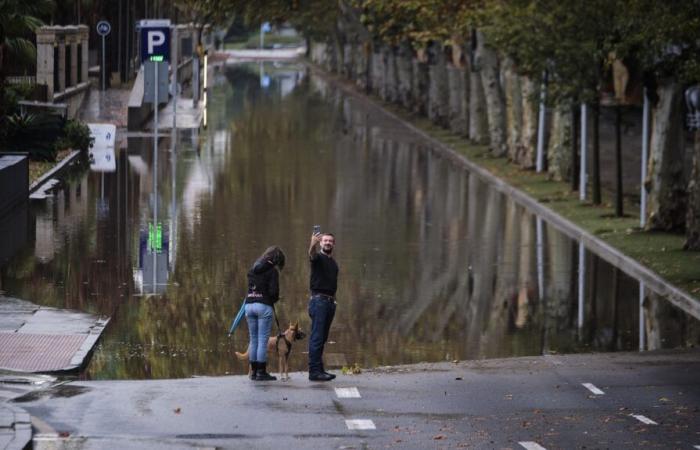Rebuild differently: one month after the floods which devastated the south-east of Spain, specialists are calling for a rethink of developments, by integrating more nature and moving neighborhoods at risk.
“The degree of destruction and ruin has been historic” in the Valencia region, where nearly 80 towns were affected by the torrential rains of October 29, points out the High Council of the Order of Architects (CSCAE) of Spain.
The meteorological episode left behind disfigured cities, broken infrastructure and cost the lives of at least 230 people, mainly in the Valencia region (222 dead), making it the worst natural disaster in the country. since the floods which left 300 dead in Andalusia in 1973.
For the president of the Order of Architects Marta Vall-Llossera, the reconstruction must “be conducted with empathy, technical rigor and a lot of responsibility”.
“With global warming making weather phenomena more and more intense and more frequent, architecture will have an important role”she continues. “We will therefore have to build differently”insists the architect, advocating a return to “the traditional, compact Mediterranean city”.
Concreting prevents water absorption
In the Valencia metropolitan area, urban expansion in the 1960s increased the artificialization of soils, increasing its vulnerability to flooding, because concreteization prevents the absorption of water.
“We must try to renaturalize cities, reduce car use, make paving stones less hard, more permeable, with better performance in the face of intense heat and torrential rains”estimates Martame Vall-Llossera in an interview with AFP.
In the case of the Autonomous Community of Valencia, a territorial action plan on flood risk prevention already exists. According to the data from this plan, the Valencia region represents 5% of the national territory at risk of flooding but has borne 20% of episodes of heavy rain over the last 10 years. The highest flood risk is concentrated on 12% of the regional territory, or 270,000 hectares, and concerns 600,000 inhabitants.
In this area, the regional authority recommends that owners have “an interior staircase with access to the roof and 1.30 meter watertight doors and windows”.
But for María Jesús Romero Aloy, more must be done, “rethink the territorial model and consider removing buildings or installations that present a high risk”.
Today, an owner has the right to rebuild on his flooded plot, even if it is located in a high risk zone. The only recourse to prevent it is “forced expropriation”as was the case in 2019 in Onteniente, a municipality located approximately 85 km south of Valencia, a neighborhood of which was “eliminated” and transformed into a flood-prone park, recalls the lawyer.
But mayors are reluctant to expropriate because it is a complicated political decision to which is added the housing shortage, she emphasizes.
“Natural barriers”
However, a month after the tragic floods of October 29, “there is awareness among decision-makers”analyzes Federico Jesús Bonet Zapater, territorial advisor in Valencia in civil engineering, canals and ports.
The abandonment, envisaged by local elected officials, of “industrial expansion and unbridled urban growth is a fable”however, predicts Rafael Delgado Artes, specialist in territorial planning and risk prevention.
Failing this, this forestry professor pleads for “natural barriers” to minimize damage, such as reforestation to “absorb the flow”intermediate overflow spaces for rivers or even “artificial beds to divert rivers from city centers ».






